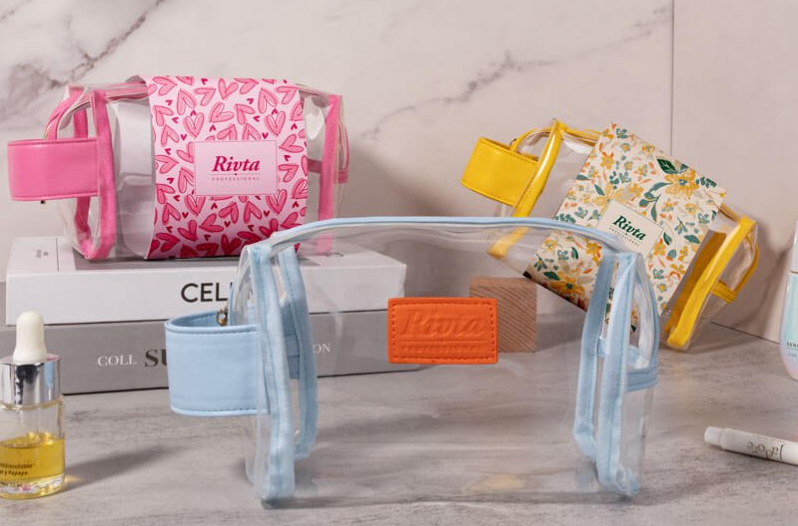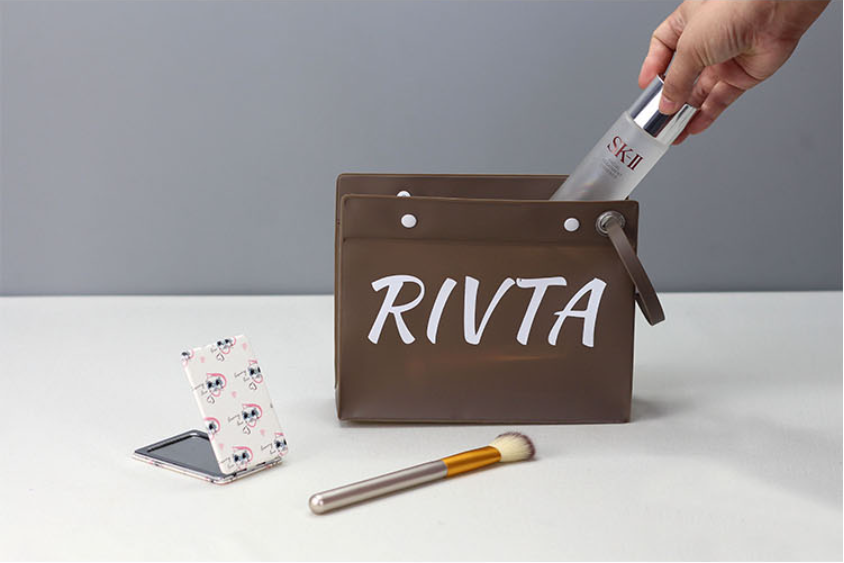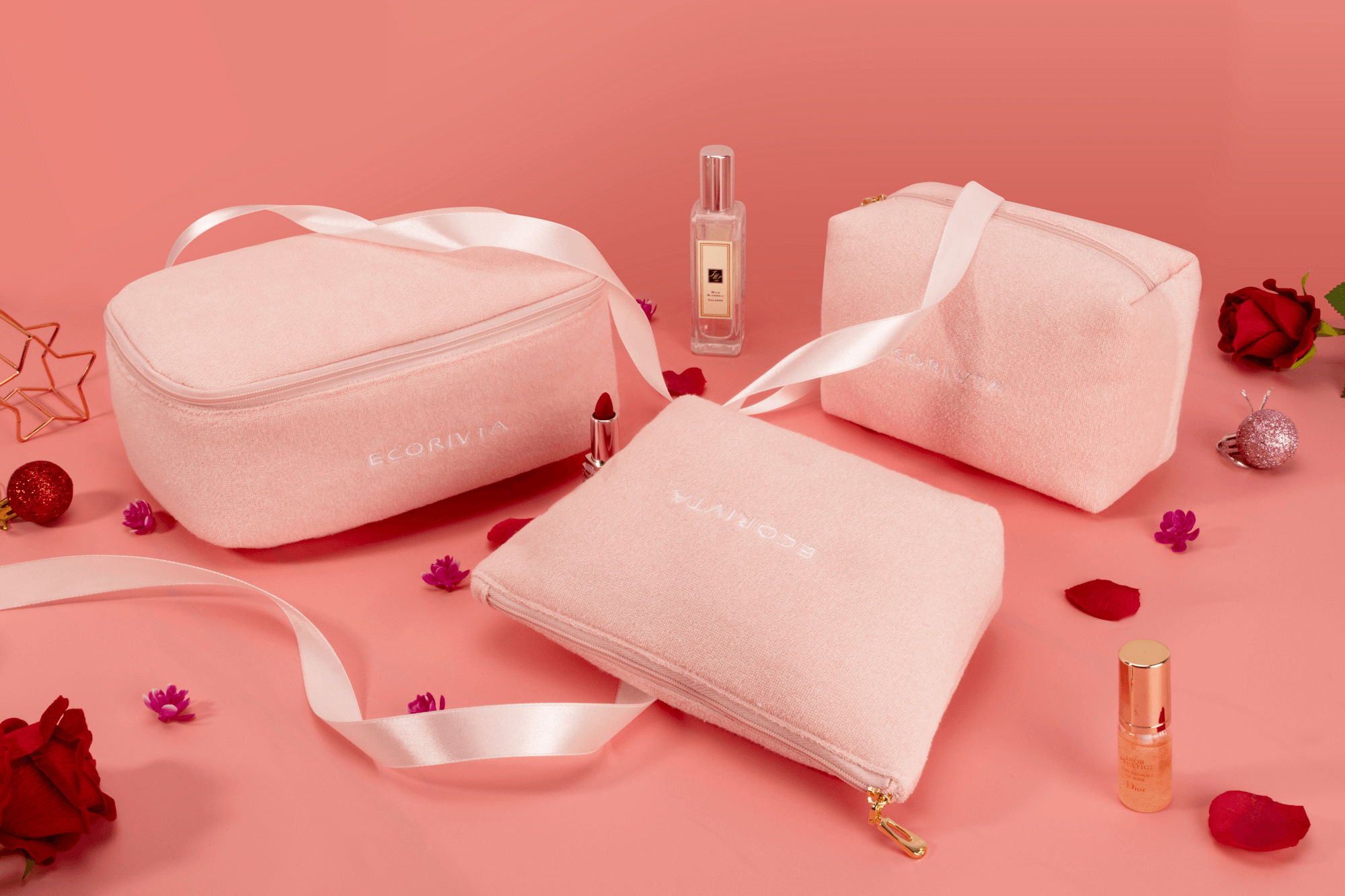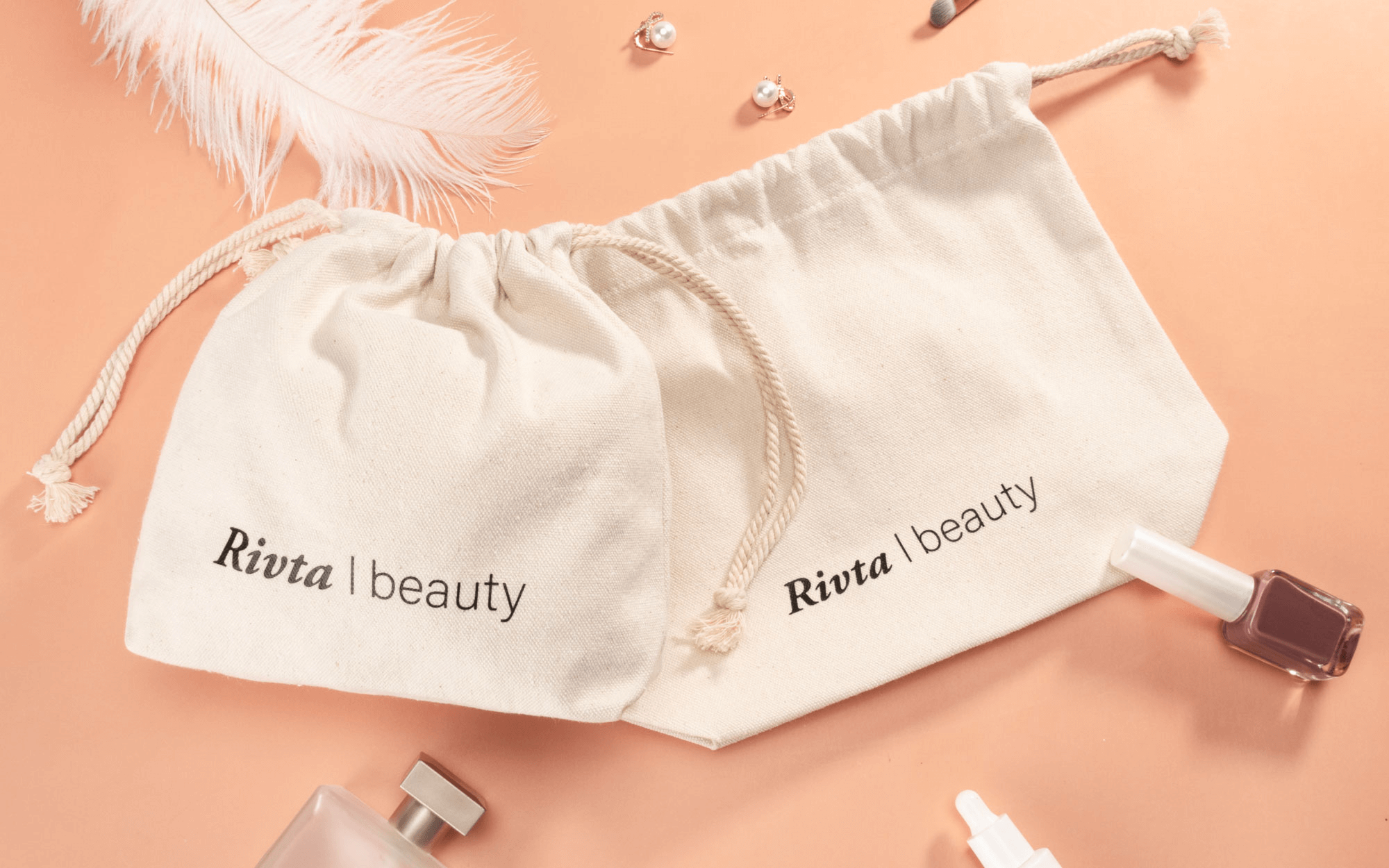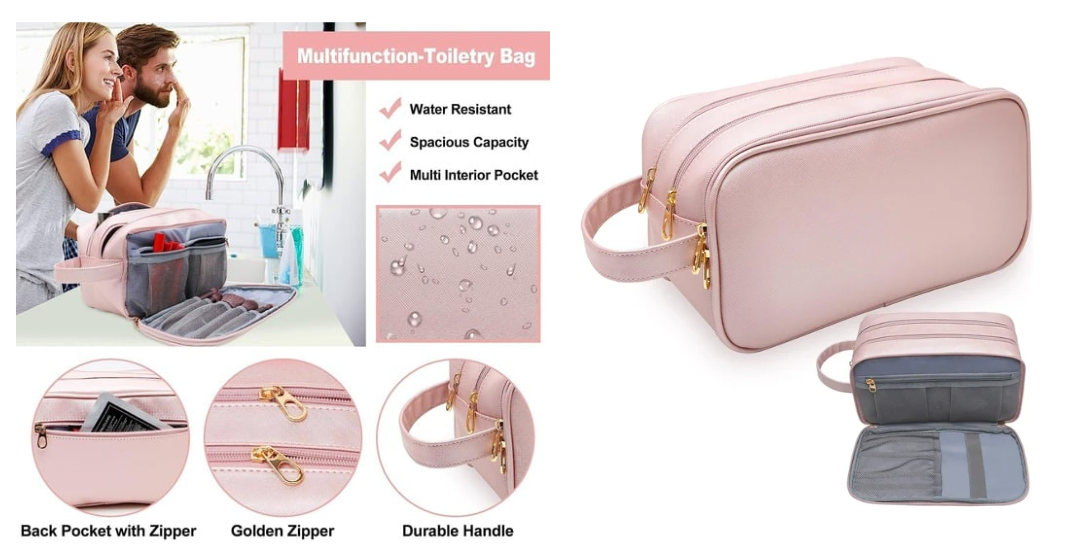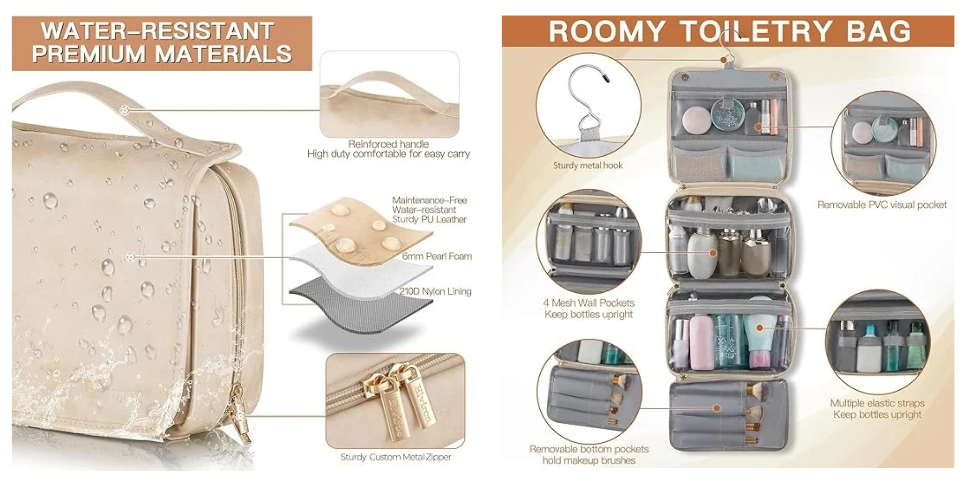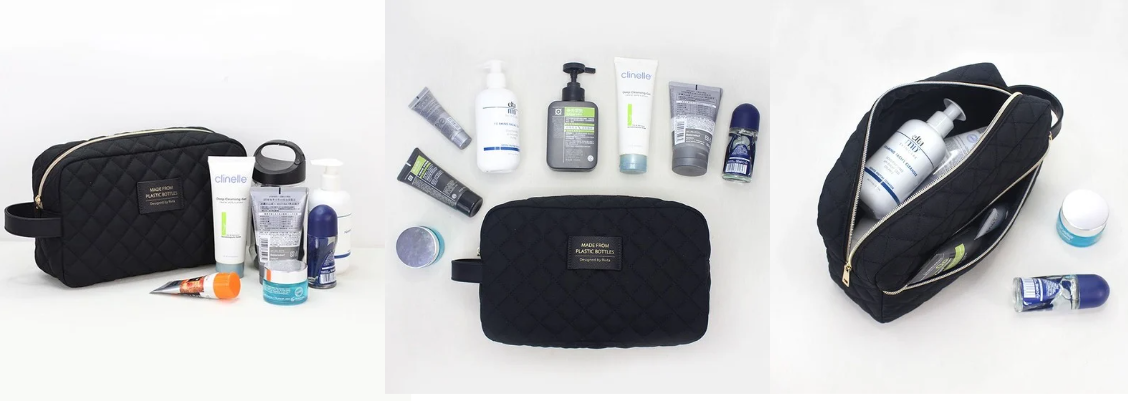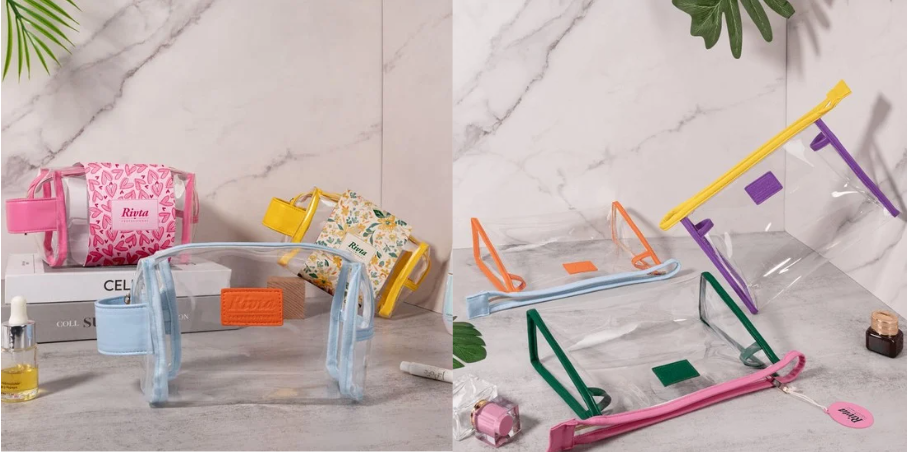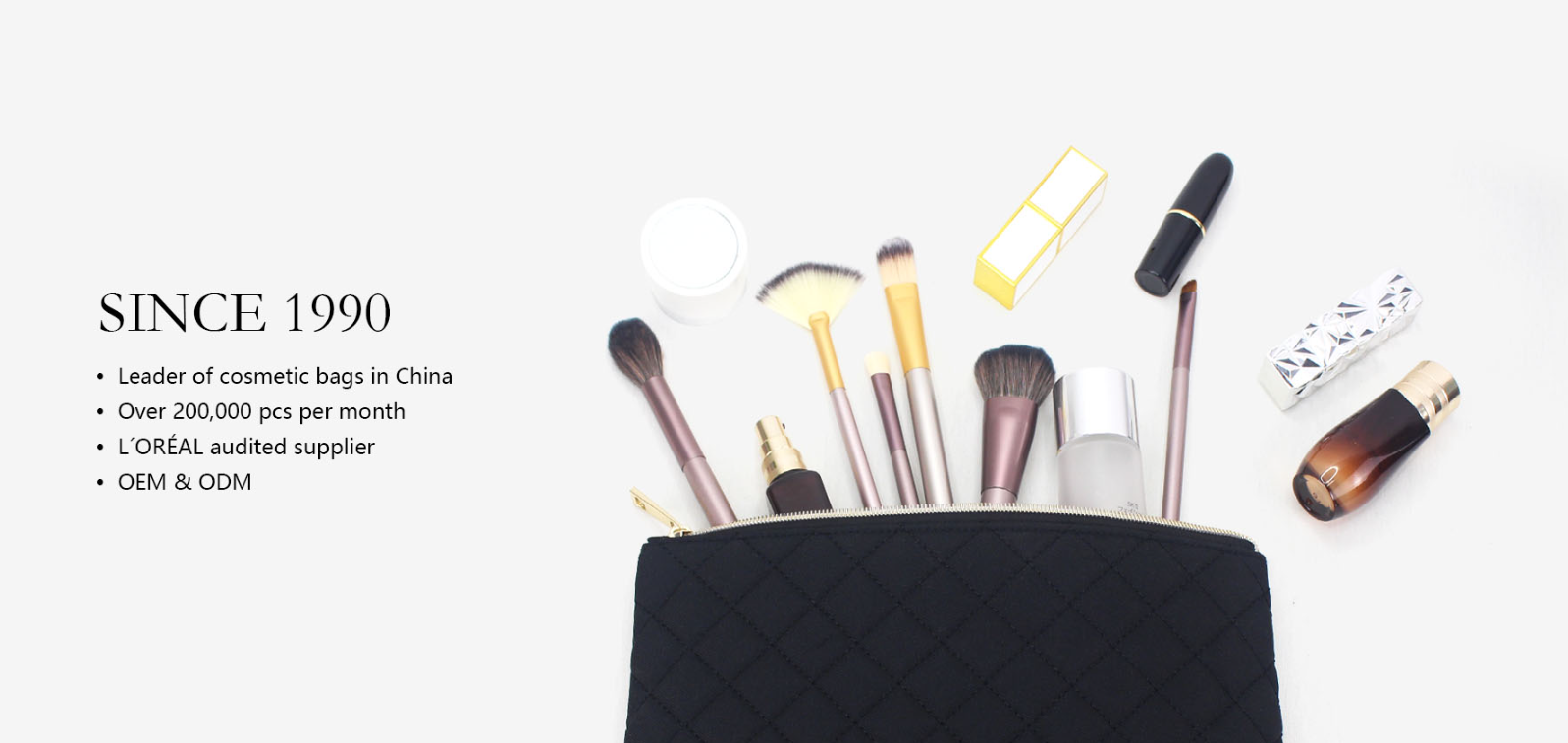How to Select Materials for Water-Resistant Toiletry Bags
A reliable toiletry bag is essential for travel, protecting your personal care items and preventing leaks from damaging your belongings. The material of your toiletry bag largely determines its performance, durability, and suitability for your specific needs. This guide will help you navigate the various options available and make an informed choice for your travel style.
Understanding Water Resistance Levels
Water resistance exists on a spectrum:
- Water-repellent: Basic protection where water beads on the surface but eventually penetrates
- Water-resistant: Moderate protection against light exposure but not submersion
- Waterproof: Maximum protection preventing water penetration even when submerged
Toiletry bags serve a dual function: protecting contents from external moisture (rain, bathroom condensation) while containing potential leaks from bottles inside. This dual functionality makes material selection particularly important—a failure in either direction can lead to damaged belongings or toiletries.
Common Materials and Their Properties
PU Leather
Advantages:
- Water Resistant: Repels water droplets and protects against light rain. Good for humid environments.
- Lightweight: Much lighter than genuine leather, reducing travel burden.
- Stylish Look: Mimics leather texture with various color options at a fraction of the cost.
- Affordable: Lower production costs make PU bags budget-friendly.
- Easy to Clean: Simple maintenance with just wiping; no special care products needed.
- Comfortable Feel: Soft, flexible, and maintains shape well when packed.
Disadvantages:
- Less Durable: Poor abrasion resistance; prone to scratches, cracking and peeling over time.
- Heat Sensitive: Deforms in high temperatures and develops cracks when exposed to strong sunlight.
- Not Eco-Friendly: Contains chemicals and has a long degradation cycle.
- Limited Breathability: Poor ventilation for stored items, especially electronics.
- Aging Problems: New products may have plastic smell; material hardens and discolors with age.
Best For:
Ideal for short trips, commuting, or occasional use when budget matters but style is important. Works well in rainy conditions.
Not recommended for frequent travelers, long trips, or harsh environments where durability is essential.
RPET (Recycled Polyester)
RPET is made from recycled plastic bottles or other polyester waste. It's increasingly popular in the travel bag industry, especially among environmentally conscious consumers.
Advantages:
- Eco-Friendly: Made from post-consumer plastics, reducing reliance on fuels and lowering carbon emissions.
- Excellent Color Retention: Like traditional polyester, RPET holds vibrant colors well, making it ideal for stylish designs.
- Lightweight: Easy to carry, suitable for travel applications.
- Water Resistance (with coatings): Can be treated with PU or TPU coatings for good water repellency.
- Compatible with Ripstop Technology: Reinforced weaves prevent small tears from spreading, improving durability.
Disadvantages:
- Less Durable than Nylon: Lower tensile strength and abrasion resistance compared to high-density nylon
- Water Resistance Depends on Coating: Performance may degrade if the coating wears off over time
- Not Biodegradable: Although recyclable, RPET does not decompose in nature
- Slightly Higher Cost than Virgin Polyester: Due to the extra recycling and processing steps involved
Nylon
Advantages: Lightweight, quick-drying, relatively affordable, available in various thicknesses
Disadvantages: Water resistance depends on coatings that wear off, not fully waterproof without treatments
When shopping for nylon bags, note the denier count—higher numbers (600D+) indicate greater durability but more weight, while lower counts (70D-210D) prioritize lightness. The Away Large Toiletry Bag exemplifies effective nylon use, with water-resistant coating enhancing its natural properties while maintaining a professional appearance.
TPU (Thermoplastic Polyurethane)
Advantages: Completely waterproof when properly constructed, transparent options available, resistant to oils and chemicals, lightweight
Disadvantages: More expensive, can become sticky in extreme heat, less breathable (can trap moisture inside)
Material Selection Based on Travel Context
- Short Business Trips: Standard nylon or polyester offers sufficient protection in controlled hotel environments while maintaining a professional appearance. PU leather is also a popular choice for this category—it provides a sleek, polished look and is easy to clean, making it ideal for business travelers who want their toiletry bag to match the overall sophistication of their luggage.
- Extended International Travel: Durability becomes paramount—nylon or high-quality TPU materials offer the longevity needed for weeks or months on the road. PU leather can be considered as well, especially in thicker, well-crafted designs. However, it's best suited for travelers who prioritize aesthetics and organization in more urban, less rugged environments.
- Outdoor Adventures: Fully waterproof materials like TPU are essential for unpredictable elements and rough handling. For backpacking, camping, or adventure travel, your toiletry bag might be exposed to rain, river crossings, or high humidity, making the distinction between water-resistant and waterproof crucial. PU leather is generally not recommended for this category, as it can be susceptible to wear in extreme outdoor conditions and prolonged moisture exposure.
Climate Considerations
- Humid/Rainy Environments: TPU or nylon with DWR (durable water repellent) treatment provide the highest moisture protection and resist mold growth. In tropical environments, the combination of high humidity and frequent rainfall creates challenging conditions where quick-drying and mildew-resistant materials are essential. PU leather can work in moderately humid environments if properly treated, but may not perform as well as TPU in very wet or tropical climates.
- Dry Climates: Canvas or standard nylon might be adequate, offering benefits like breathability and lighter weight. In desert environments, materials that resist heat deformation and don't attract static electricity (which attracts dust) may be more important than maximum water resistance. PU leather performs reasonably well in dry climates, offering heat resistance and dust protection while maintaining a refined appearance.
Balancing Key Factors
Durability vs. Weight
The weight difference between materials might seem negligible—perhaps just 1-3 ounces—but can matter significantly for ultralight travelers or those meeting strict airline carry-on weight limits. Frequent travelers benefit from investing in slightly heavier but more durable materials that save money and reduce waste over time.
Environmental Impact
The environmental calculation isn't straightforward:
- Natural materials like organic canvas have better environmental credentials but underperform in water resistance
- Recycled synthetic materials offer a good compromise between performance and sustainability
- Extremely durable materials may be more sustainable through longevity than frequently replaced alternatives
A natural material like cotton canvas requires significant water and pesticides unless it's organic, while synthetic materials are petroleum-based but can be recycled and often last longer. The most environmentally friendly choice might be the most durable option that prevents frequent replacements.
Practical Recommendations
- For Business Travelers: High-quality nylon with reliable water-resistant coating (Away Large Toiletry Bag, Tumi Response Travel Kit). Look for organizational features and a professional appearance that complements business luggage.
- For Adventure Travelers: Fully waterproof TPU or silicone (LINE+ARC Dopp Kit, Sea to Summit products). Prioritize materials with sealed seams and robust construction that can withstand outdoor conditions and rough handling.
- For Budget-Conscious Travelers: Polyester or Oxford cloth with quality water-resistant coatings (WANDF Toiletry Bag). Focus on reinforced stitching at stress points, as this is where budget options typically fail first.
- For Eco-Conscious Travelers: Recycled materials or organic canvas with natural wax treatments. Consider brands that offer repair programs or lifetime warranties to extend product lifespan and reduce waste.
Conclusion
There is no universal "best" material for water-resistant toiletry bags—the optimal choice depends on your specific travel habits, destinations, and priorities. For most travelers, high-quality nylon or TPU materials offer the best overall balance of properties.
Remember that construction quality matters as much as material choice. Always check for quality zippers, reinforced seams, and thoughtful design features to ensure your toiletry bag serves as a reliable travel companion for years to come.
